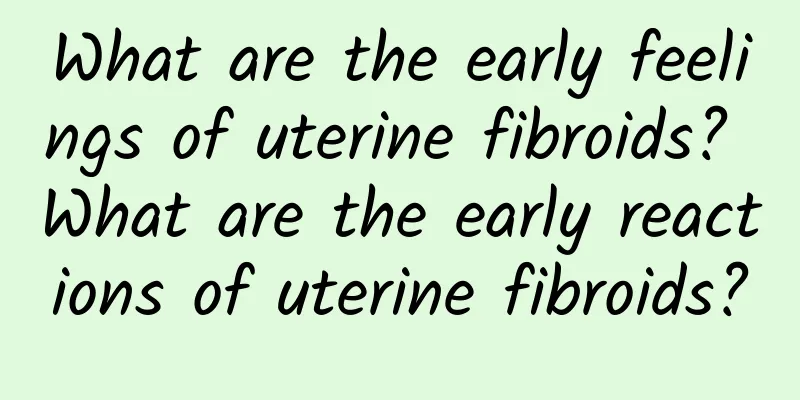How long can you live with late-stage Bartholinitis?

|
The Bartholin's glands are easily contaminated during menstruation, childbirth or sexual intercourse, which causes bacteria to invade the gland ducts and cause congestion and edema, which is called Bartholin's gland inflammation. Bartholin's gland inflammation often occurs in the reproductive age, and rarely occurs in infants and postmenopausal women. The pathogens are mostly Staphylococcus, Escherichia coli, Streptococcus and Enterococcus, and a few are gonococci. In the acute stage of Bartholin's gland inflammation, the lower 1/3 of the labia majora is painful and swollen, and walking is restricted in severe cases. When abscesses are formed or cysts are large, they must be incised and drained. Bartholinitis is a common gynecological inflammation. Generally, it can be cured with timely treatment and will not directly affect life expectancy. The combination of Chinese and Western medicine has also achieved good results in the treatment of Bartholinitis. Let's take a look at the treatment methods of combining Chinese and Western medicine. 1. Use antibiotics and Chinese medicine for external treatment Inflammation of the Bartholin's glands is mostly caused by pathogenic bacteria invading the vulva. Antibiotic treatment has a certain effect, but it is often easy to relapse and repeated infection occurs. Chinese medicine external treatment has a satisfactory effect. For those with obvious gland swelling in the acute stage but not yet purulent, 8 million to 10 million U of penicillin or 320,000 U of gentamicin can be intravenously dripped, and 30g of each of Sophora flavescens, Gentiana scabra, and Licorice can be decocted in the field to remove the residue, and then the affected area can be bathed or fumigated. Phellodendron chinense and Gypsum can also be ground into very fine powder, mixed with sesame oil, and applied to the swollen vulva surface. In addition, when fumigating the vulva, if possible, the vagina should also be flushed at the same time to keep the entire vulva and vagina clean and hygienic. 2. Chinese medicine treatment after abscess incision and drainage Once an abscess is formed, it should be incised and drained as soon as possible, and thoroughly drained. At this time, Chinese medicine can be taken orally and externally to accelerate the discharge of pus and quickly subside inflammation. The heat-clearing and detoxification method is usually used as the main method, supplemented by blood circulation and blood stasis, softening and dispersing nodules, and draining pus. Medication: Smilax glabra, Shuanghua, Forsythia suspensa, Gleditsia sinensis, Rhizoma Paniculatae, Paeonia lactiflora, Astragalus membranaceus, etc. After incision and drainage, the drainage thread is often soaked with Scutellaria baicalensis, Phellodendron chinense, and Borneol. Then use Jie'eryin lotion or chlorhexidine lotion to clean the vulva and vagina on time. |
<<: How long do people with Bartholinitis usually live?
>>: How many years can a person with Bartholinitis live?
Recommend
Women's problems, women's solutions: Tips for painless abortion
Many women may have many questions about painless...
What is the best medication for vulvar itching?
There are completely different reasons for vulvar...
What to do if cervical warts often recur
What should I do if cervical condyloma acuminatum...
Is the egg still there during ovulation bleeding?
Ovulation bleeding usually occurs when the egg is...
What are the symptoms of vaginitis that women are most likely to suffer from?
The vagina is an important part of a woman's ...
Eat out to lose weight and eat light hot pot for dinner
Of the three meals a day, dinner is the one that ...
Causes of ectopic pregnancy in women with fallopian tube dysplasia
As society becomes more and more open, many women...
How to rule out an ectopic pregnancy yourself
Ectopic pregnancy is a dangerous pregnancy abnorm...
What are the precautions for painless abortion?
Painless abortion is very popular now, because it...
Added sugar is the devil! High-fiber and sugar-blocking diet helps you get rid of obesity, fight aging, and stay away from diabetes
People who love to drink sweet drinks and eat des...
Will adnexitis be inherited by the next generation?
Is adnexitis hereditary? Experts say that adnexit...
Can you eat bamboo shoots during menstruation? What are the benefits of bamboo shoots?
Women should not eat bamboo shoots during menstru...
Three tips for getting rid of obesity: no sugar + picky eating + exercise
Among the top ten causes of death in China, 7 are...
Why do women feel cold during menstruation? How to regulate their health?
Many female friends find that they are very afrai...
What should we pay attention to before undergoing abortion surgery?
What should we pay attention to before an abortio...









